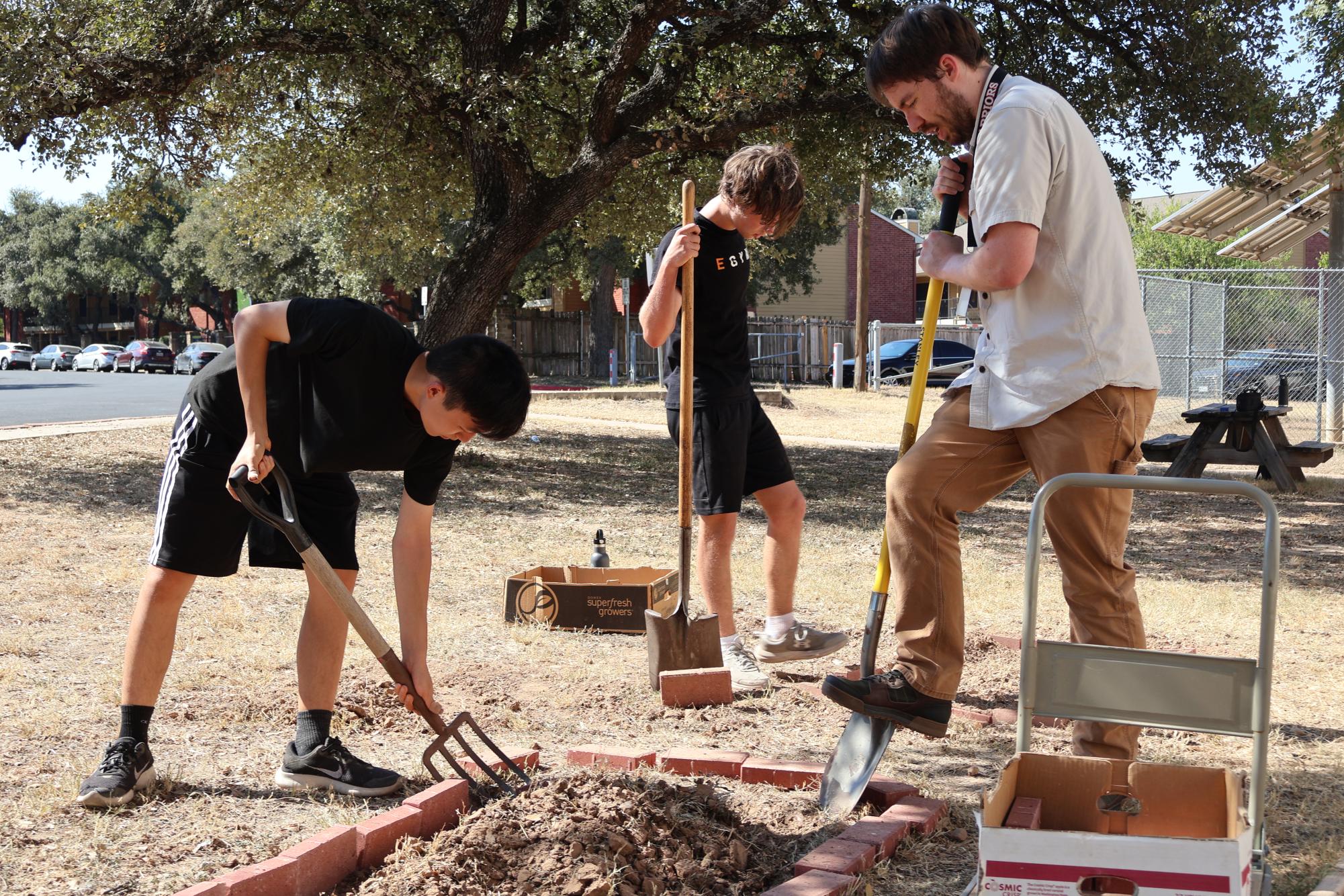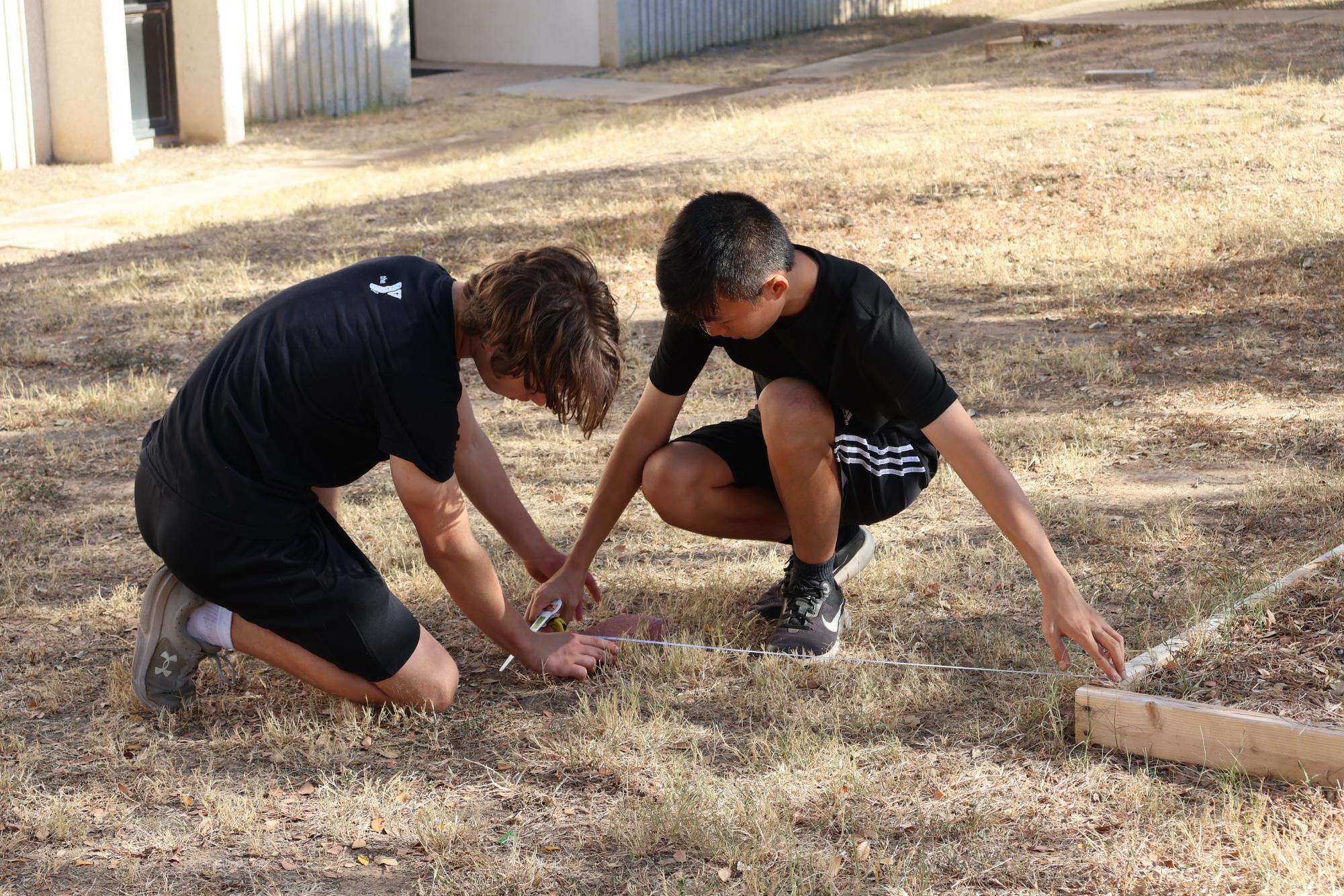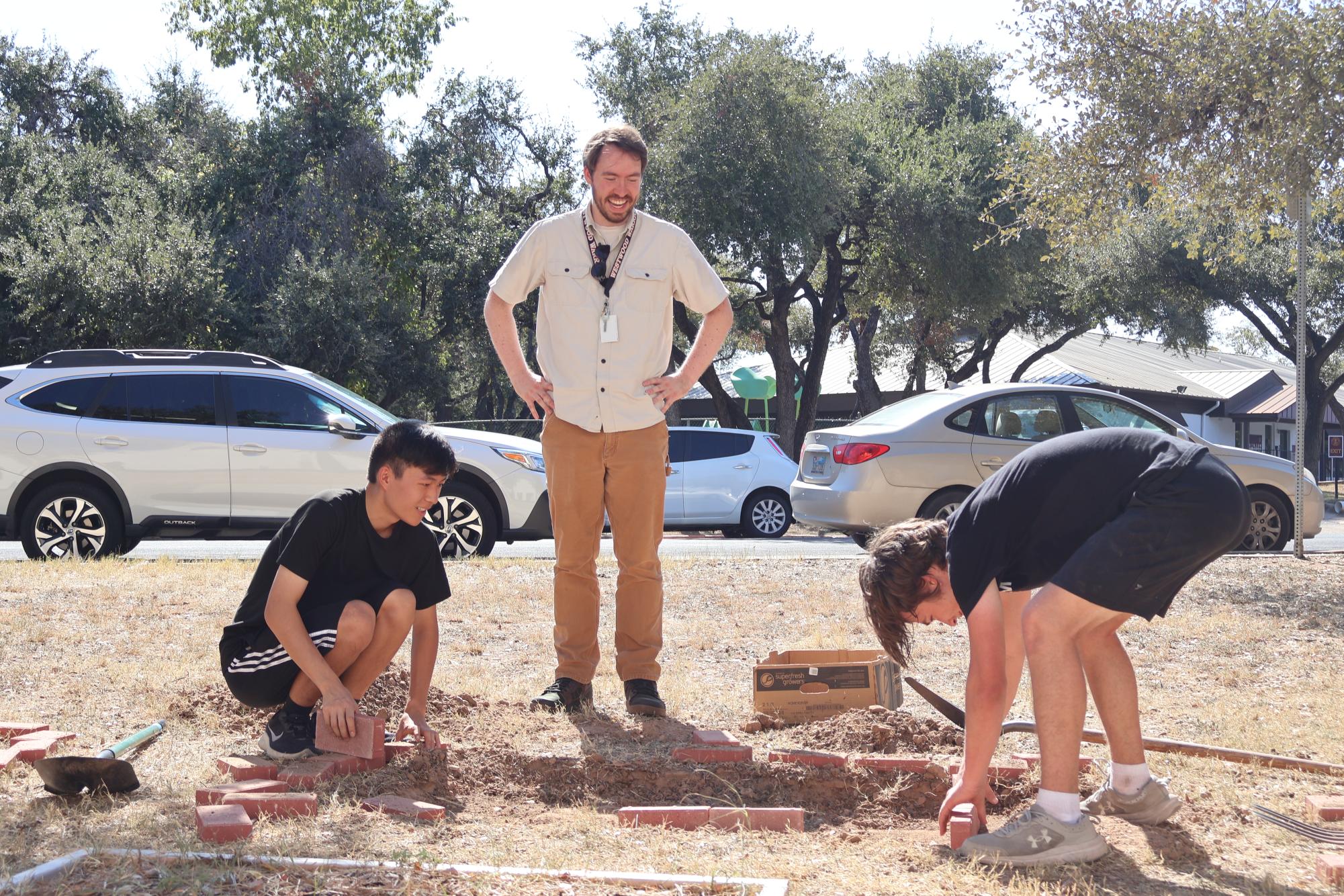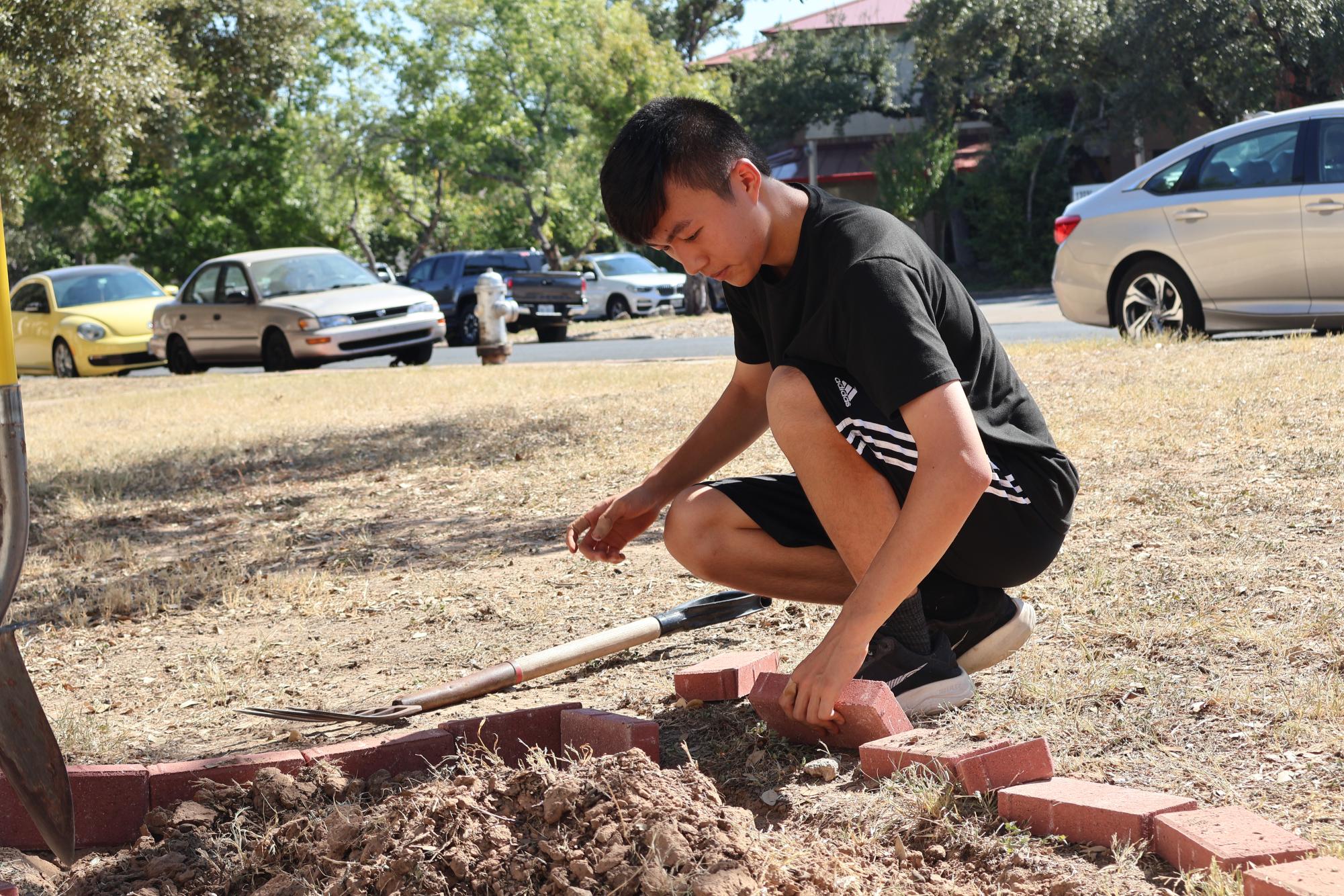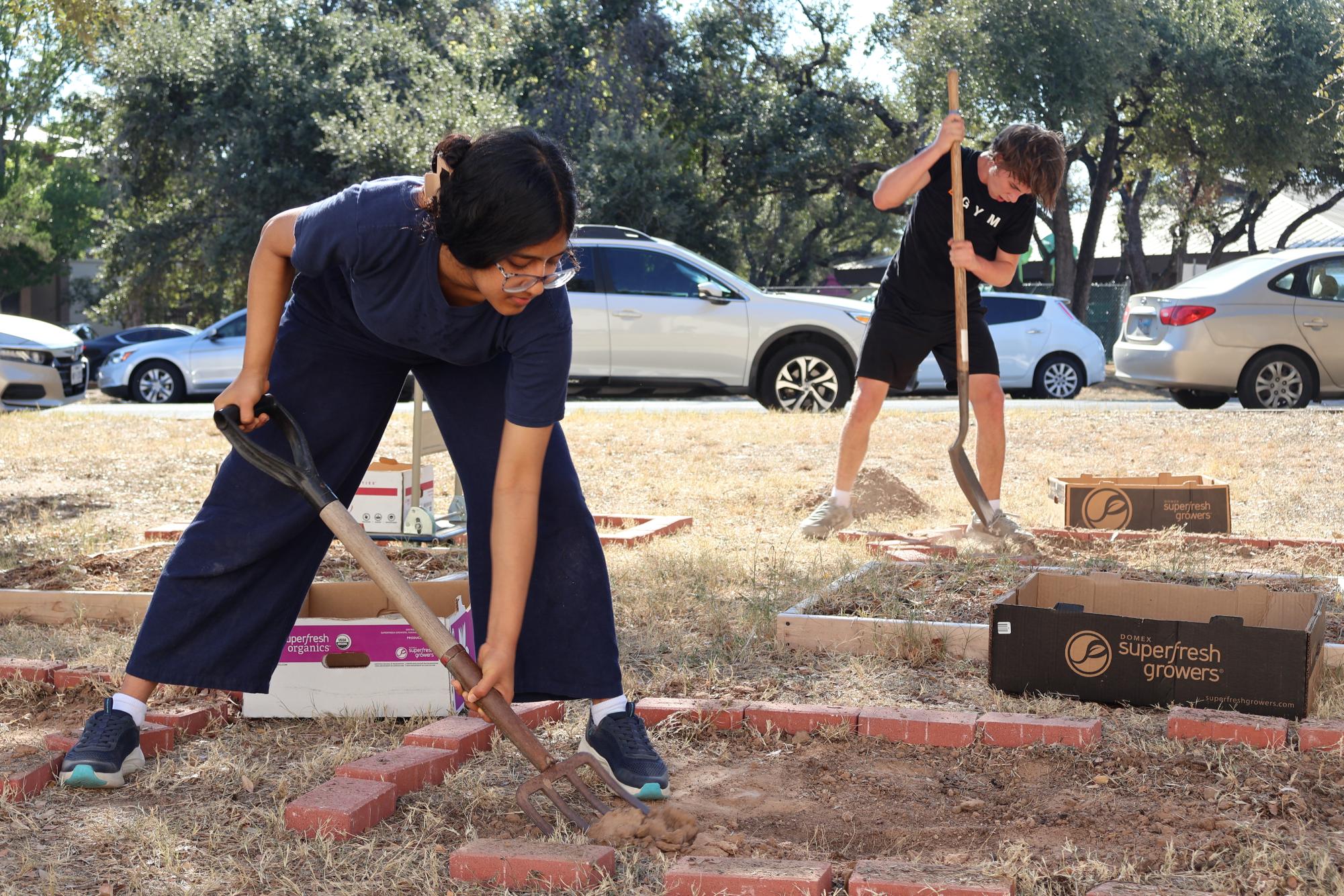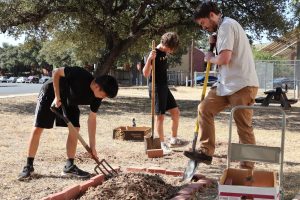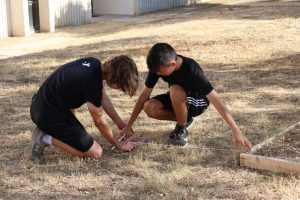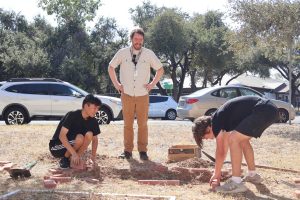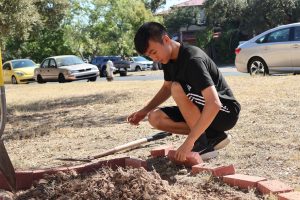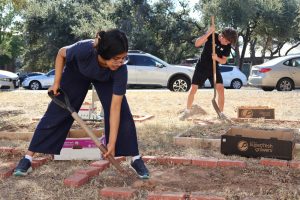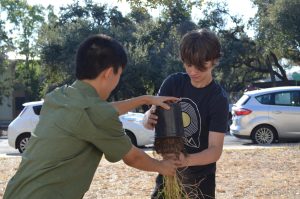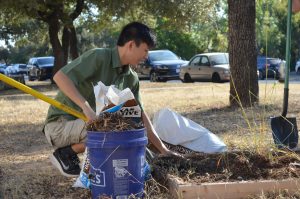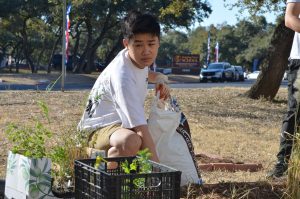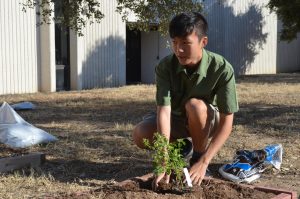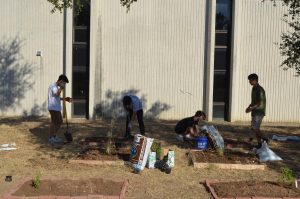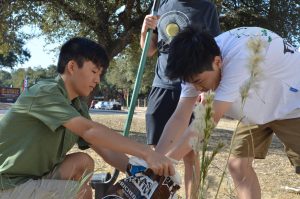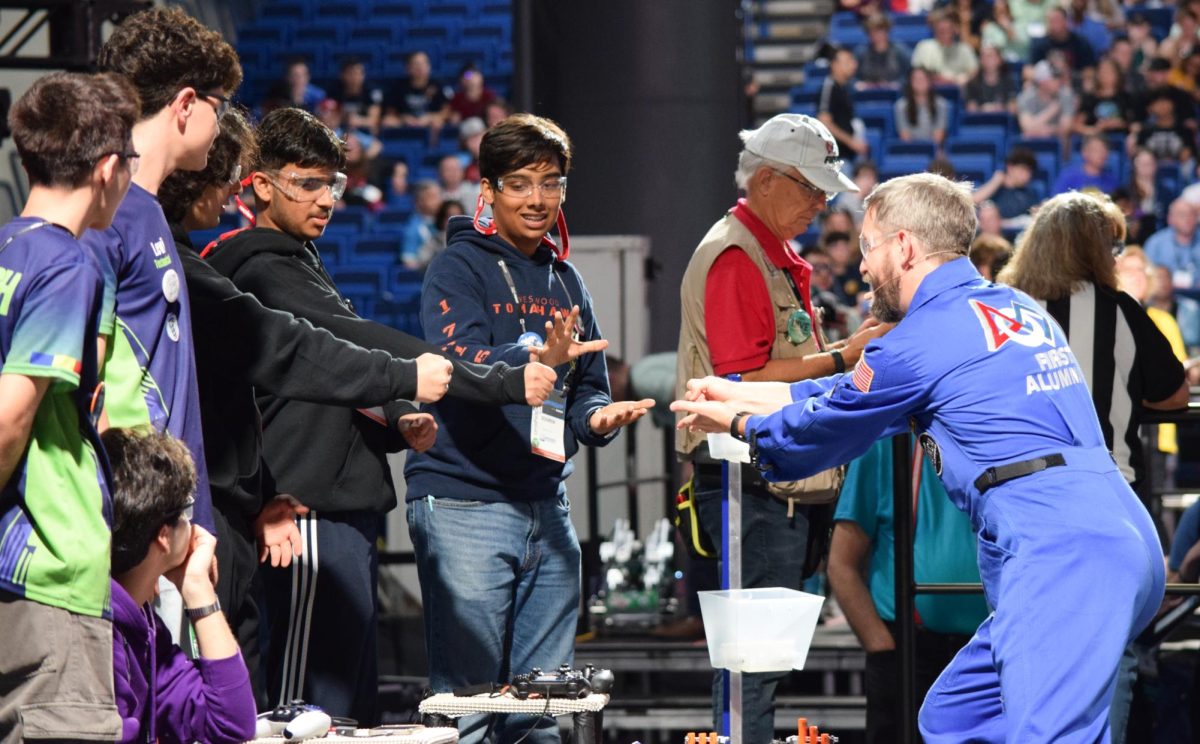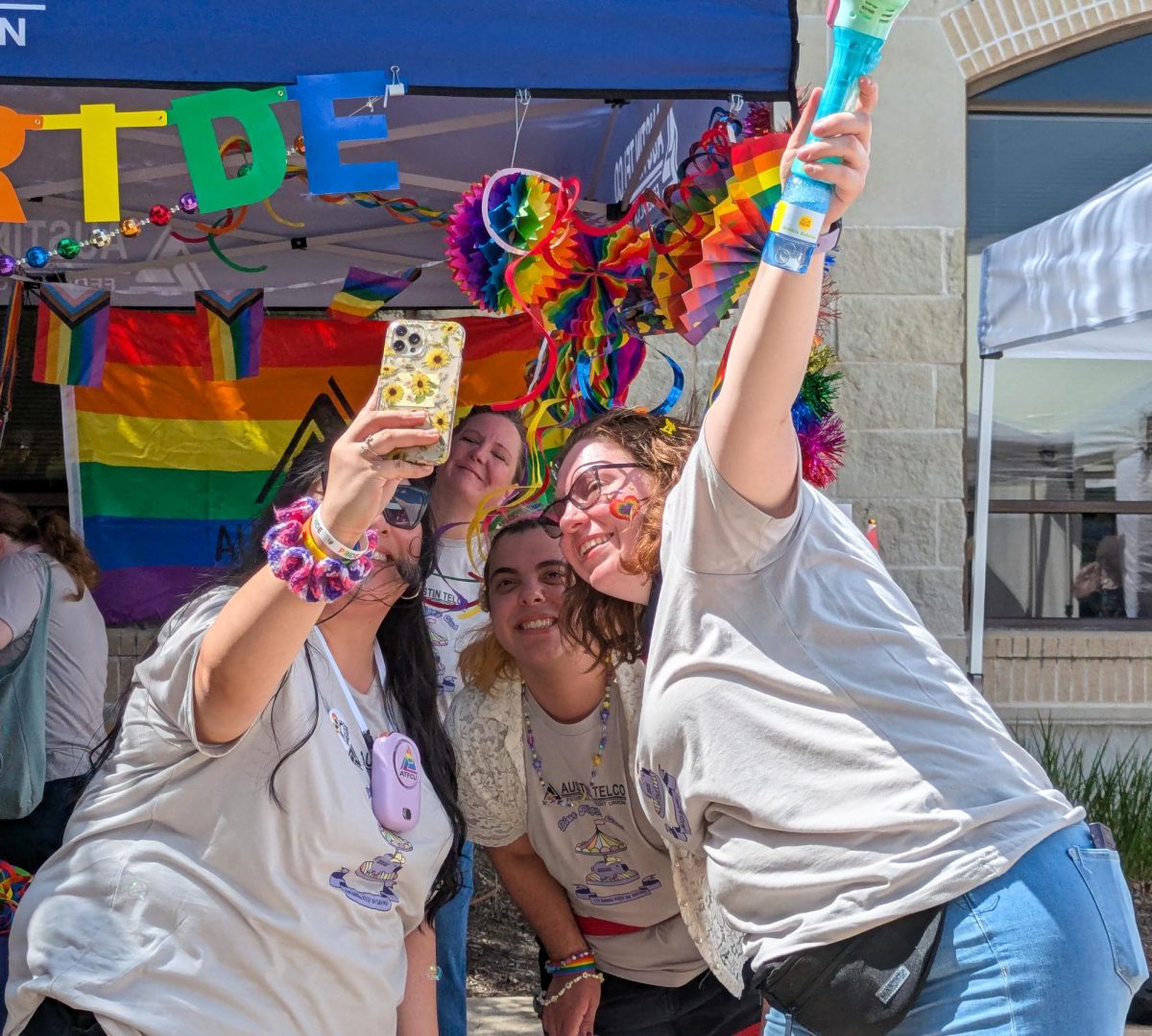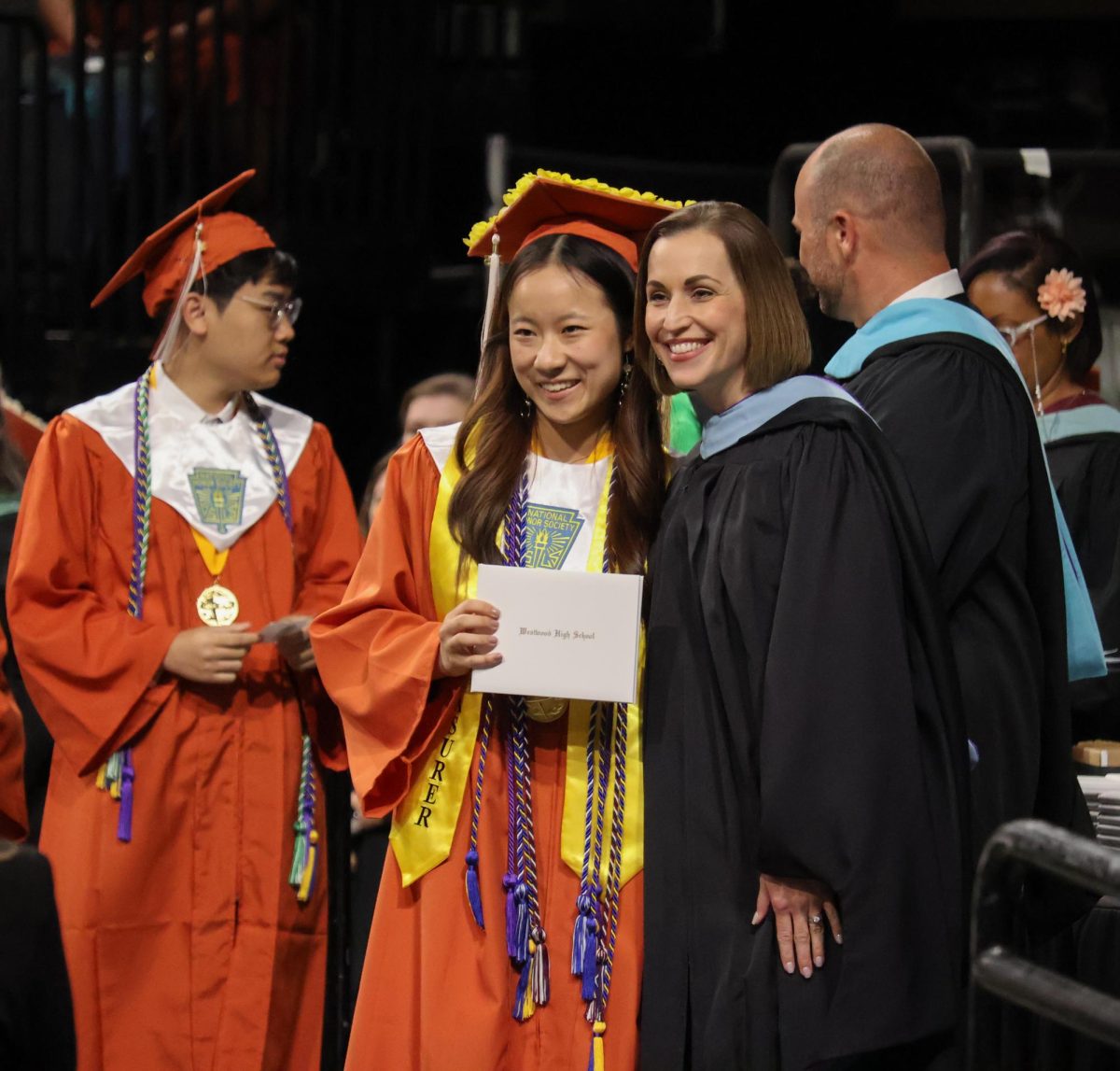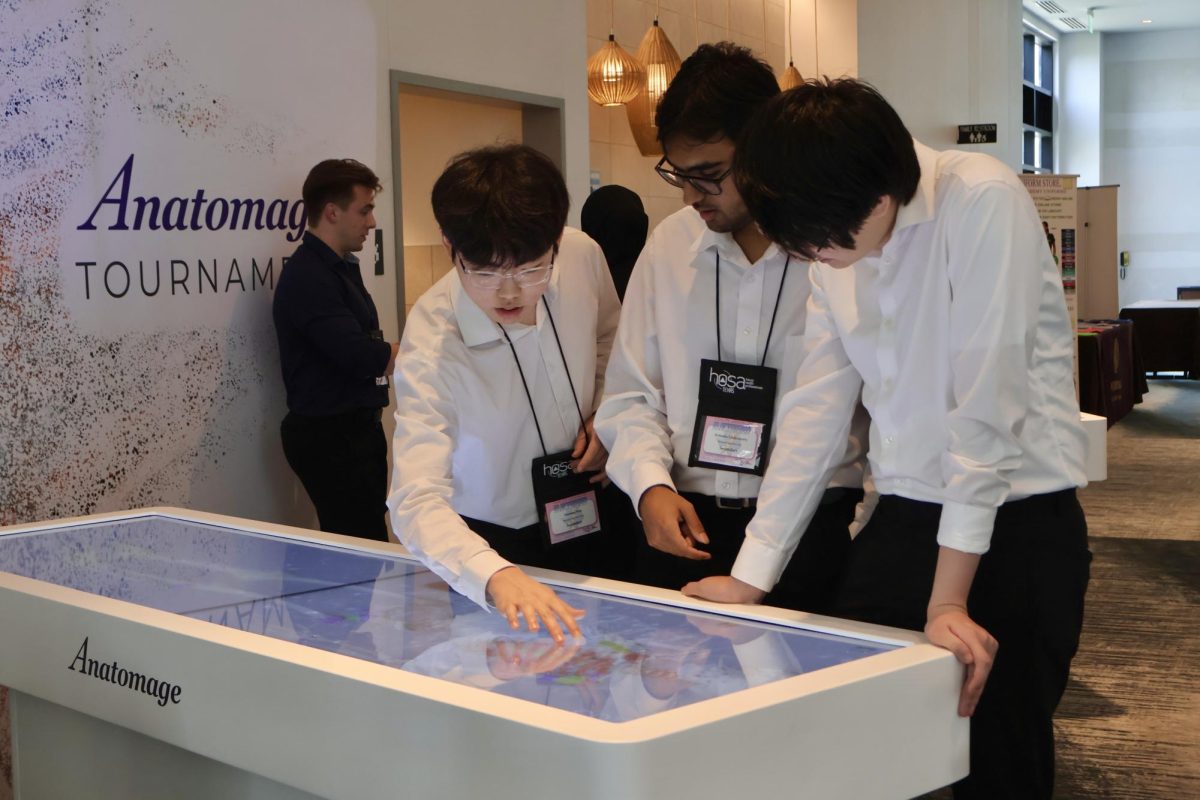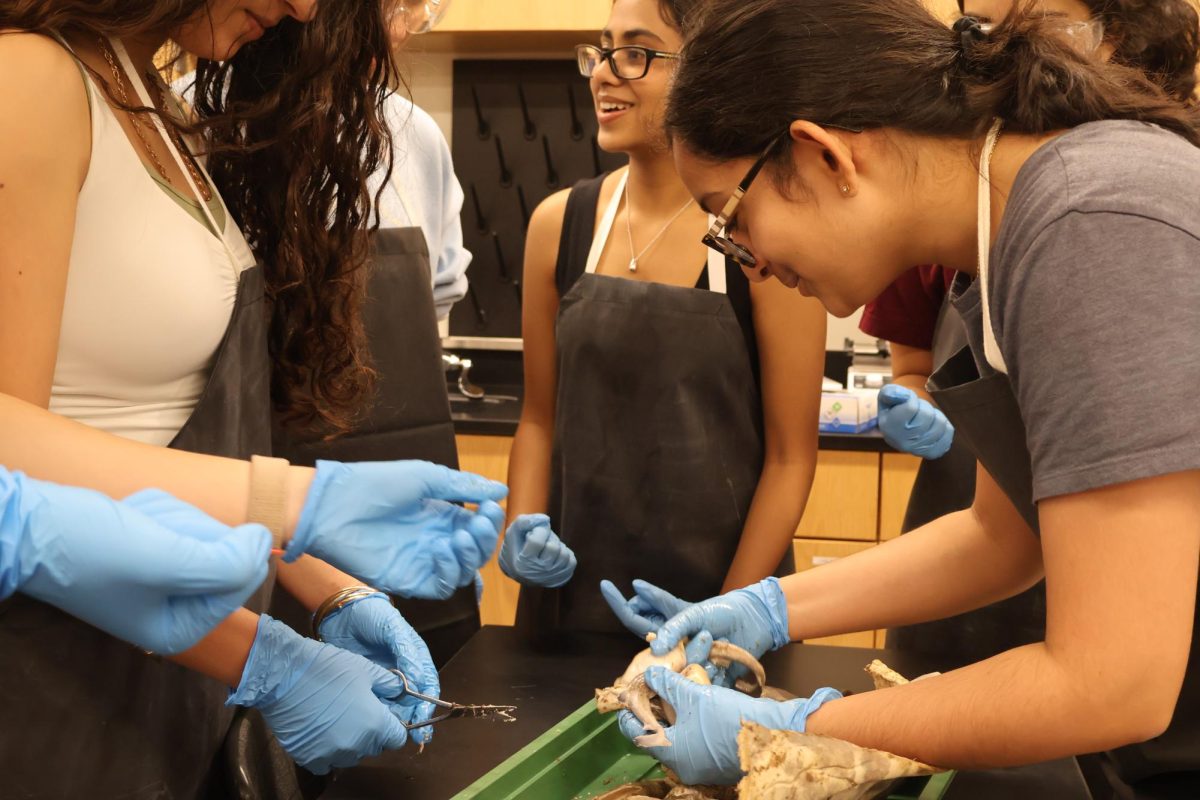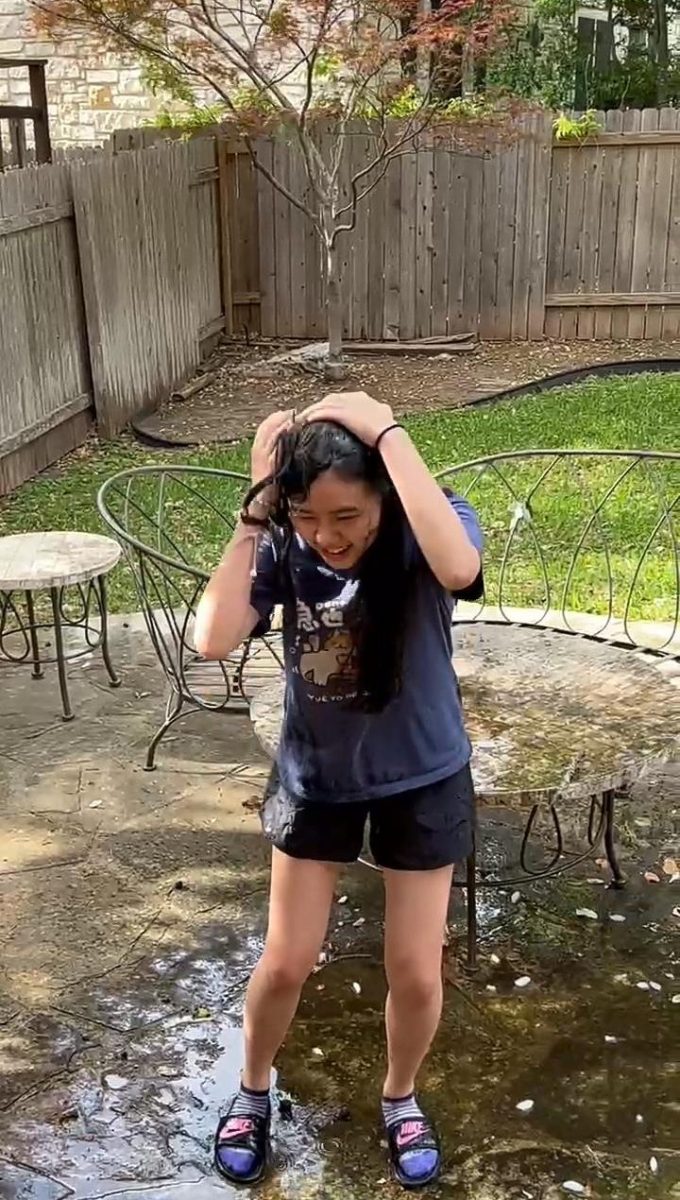Since the summer after sophomore year, Christopher Li ‘25 knew he wanted to plant a garden at Westwood. A year later, after collecting all the needed administrative approval, grant money, gardening supplies, and native plants, he gathered a group of volunteers and got to work. After a series of dedicated work sessions featuring various horticultural tasks, Li finished setting up the basic structure of the garden just outside the school on Monday, Oct. 14. He will use leftover grant money to continue expanding the garden throughout the rest of the year.
“There are a lot of people that had to approve [the garden], and I’m working off of grant money, so I was thinking, ‘If I fumble this, it’s gonna be really awful,’” Li said. “I’m just relieved we’ve been doing good work across these past few work days.”
Believing that the prevailing interest among the student body is pursuing a medical or technical career, Li thinks that there is a general lack of awareness about preserving and enhancing Austin’s natural features. He hopes that his gardening project will inspire more interest in gardening and responsible use of the environment.
“At Westwood, we’re all [computer science] nerds or want to be doctors, and I think it’s funny because Austin, Texas is actually a really pretty place if you discount the fact that maybe it’s [too hot] to go outside sometimes,” Li said. “There’s a lot of stuff here that no one knows about because they’re just not interested in it, [because] we live in the Silicon Hills, and everyone here [just] wants to work at Dell.”
This year’s project was a continuation of last year’s gardening effort, which took place in the small courtyard next to the art hallway. Li, some of his friends, and select Environmental Club volunteers worked together to create a couple of garden beds. This served as a trial run, helping Li to understand the process of organizing labor and timing to create the garden.
“Initially, I was like, ‘What if we make a gardening club?’ But then I realized that we have enough clubs at Westwood,” Li said. “So, I went to Environmental Club [for help] and we did some work [on the garden beds], but, through my fault, they haven’t been maintained. I will come back to [them] in a few weeks, pull out all the weeds, [and] fill the beds with wildflower seeds.”
In order to get his new gardening location approved, Li emailed Ms. Campbell with details, including pictures of where he wanted the garden to be.
“I [initially] emailed Ms. Linz about the original proposal,” Li said. “At the time, she was the Student Council faculty member. She was like, ‘Yeah, that’s cool.’ I [also] asked Ms. Campbell [later on], and administrative support has been pretty great.”
In order to collect the funds needed to purchase components for the garden beds, Li submitted a proposal to Roots & Shoots, an organization founded by Jane Goodall that gives small grants to students in order to support projects and fund youth activism. Li used part of the $250 grant to buy eight bags of soil and cedar lumber for the wooden frames, saving some for similar expenses in the future, including soil and building materials. He focused on buying high-quality wood, but settled for plain and clay-filled soil because the native plants he planned on planting were capable of growing in the dry Texan soil.
“[The cedar lumber] was really expensive – the gold standard – because it’s very rot-resistant and will last for longer,” Li said. “You can treat other types of wood with copper or arsenic, but in the future, we might want to put in edible things. [For soil] I ended up buying a brand called Texas Native because they take local soil and mix it with composted forest products. But it doesn’t matter because it’s still plain [and] mostly inorganic clay. There’s no real need for nutrients; native plants don’t need to be fertilized like a food crop would be [because] they’re able to make good use of the nutrients inherently present in our local soils. Down here in Austin, the soil in the mountainous area is just huge chunks of limestone with clay. Over where I live, it’s even more clay.”
In his search for environment-related grant programs, Li also contacted Wild Ones, an organization hoping to promote biodiversity through environmentally friendly landscaping. He received the $250 Lorrie Otto Seeds for Education grant, and used the funds to buy native plants for the garden. He also received native plant seeds from a nature festival last year.
“A lot of times, these organizations that are trying to promote native plants will give you [the] seeds,” Li said. “Last year, during the Roots & Wings Festival, there was another group called the Monarch Sanctuary Project. They’re all about making native plant gardens and they were giving out free seeds, [which I used in the garden].”
In addition to garnering resources from a range of events and organizations, Li also collected a lot of the seeds he sowed from various neighborhoods, parks, and roads. Some of the plants that Li planted include a Gregg’s mistflower, a chiltepin, and a lanceleaf coreopsis given to him by his gardener friend from Round Rock.
“For seeds, we planted a standing cypress, which is really heat- and drought-tolerant, and it’s very pretty,” Li said. “Then there’s prairie fire, which is also called an Indian paintbrush. It’s part of a family called broomrapes and it parasitizes the roots of grasses. I didn’t realize it was parasitic until I did more research on it afterward. It’s not going to kill the grass but maybe the grass will grow worse.”
For more support during the gardening process, Li worked with English teacher Mr. Drake Clapp and his World Literature Appreciation group.
“Mr. Clapp was talking to some students and they wanted to build a garden. I was like, ‘I’m actually doing that right now,’ and shared my plans with him,” Li said.
The volunteers met in the morning during staff development days. Their process consisted of digging through the dry, hard clay ground, laying bricks, filling the garden beds with loose soil, and, finally, planting the seeds and small plants. Some of the volunteers were part of Analyze Realize Catalyze (ARC), an interest group that researches issues to find solutions, and helped Li plan out the garden.
“It’s been really enjoyable,” ARC member Sanjana Iyer ‘25 said.“I think we don’t see a lot of nature, especially around this entire school area, so I’m very happy to work with all these people and bring something a little bit brighter to the Westwood community.”
Li, along with most of the volunteers, believes that manual labor is the most fulfilling kind of volunteering.
“I absolutely love doing this stuff,” Chase Klipec ‘25 said. “It’s just so nice, being able to put work into something that’s physical. It’s not like you’re writing on a piece of paper or working on a laptop. You’re here to take a step back and just do the work.”
Although he has finished building the primary structure of the garden and filled it with plants, Li will continue to water and maintain the garden as the year goes on.
“I just hope the seeds survive the winter and don’t get blown away,” Li said. “Hopefully it rains because the bluebonnets are interesting: they don’t wait for the winter to start germinating, and they grow through the winter because the leaves are able to survive the cold. But if it doesn’t rain between now and the spring, we won’t have bluebonnets.”
As seniors, Li and his team have ensured that their agricultural legacy and love for gardening will continue growing long after they graduate this spring. After Li and the other volunteers graduate, Mr. Clapp and his Theory of Knowledge class will help look over the garden and add more plants that students are interested in.
“This is a wonderful opportunity,” Mr. Clapp said. “People are disconnected from the life around them. I think this will be the only garden on all of Westwood’s campus. In Canada, they have an outdoor education system, and many schools have an [agriculture] class or a garden, but we don’t. I think a lot of people don’t know what they’re missing. This is going to be a really good treat for Westwood in the future.”
Up until the 10th grade, Li planned to work with computers his whole life, until he found an innovative way to pursue his interest in gardening instead by studying the biochemical aspects of agriculture. He hopes to continue to explore his passion for agriculture long after the garden grows out.
“After I started getting into gardening myself, I quickly realized, ‘This is so cool,’” Li said. “Before that, I had been really interested in insects and wanted to do entomology. But entomologists are all into agriculture because they need to study the plants that the [insects] are eating, so [entomology] turned into gardening. After I started gardening, I was like, ‘I could do this for my entire life.’”



